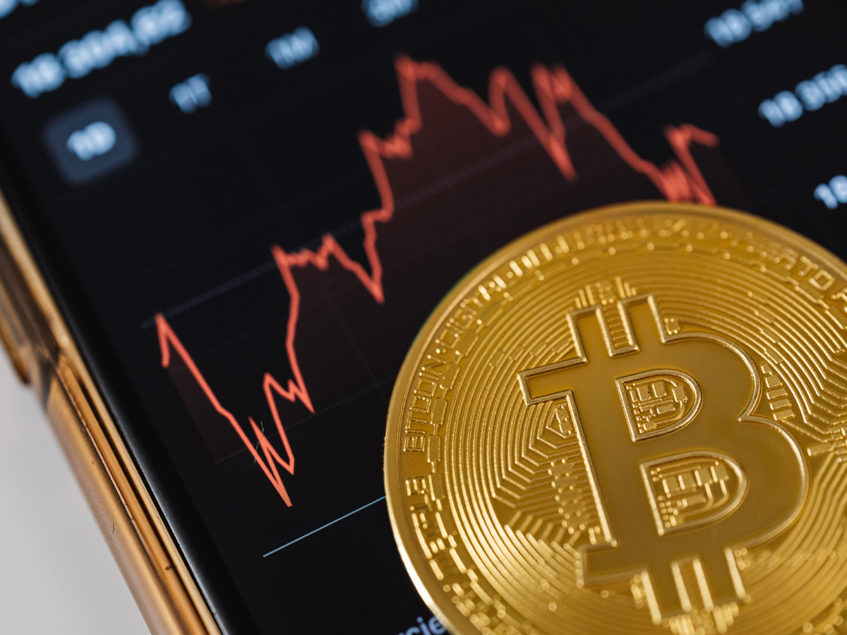Does blockchain truly hold promise for creating a more efficient supply chain, or will it be dragged down by the lead weight known as Bitcoin?
The recent plunge in the value of bitcoin and other cryptocurrencies has many observers questioning whether blockchain, the distributed ledger devised to record the buying and selling of digital coins, can survive as a standalone concept for managing key business transactions.
In particular, blockchain has been touted as an innovative method for tracing the provenance and journey of products through the supply chain. By uploading relevant data to a supposedly immutable ledger, spread across multiple computers, shippers can prove that certain raw materials and manufactured goods were sourced in a sustainable and ethical manner.
So goes the theory, and there have indeed been a number of successful blockchain pilots in recent years by major retailers such as Walmart and Target, and technology leaders such as IBM.
Blockchain has shown particular promise in the agriculture sector, where it can be difficult to determine the precise origin of a given product. One example of an early success is the TraceHarvest Network, an initiative to track and trace the “full lifecycle of agricultural products, starting at the seed source.” It was launched in 2020 by blockchain platform provider BlockApps, in collaboration with Bayer Crop Science. In Africa, blockchain is being used to achieve visibility of the cattle supply chain, as well as to link farmers, distributors and retailers in efforts to boost crop production.
But those who tout blockchain as a cure-all for global supply chains often gloss over the accompanying complexities. One is the persistent linkage between blockchain and virtual coins and tokens, which are generated as part of the process of creating, or “discovering,” the blocks that contain the transactional data. Typically these are put up by “miners,” individuals who are rewarded with some form of digital currency for their efforts in building blockchains through the solving of mathematical equations. The precise form of the coins varies — some are securities that can be traded like any other instrument regulated by the U.S. Securities and Exchange Commission. Others are limited to specific uses, such as the purchase of products or services. (Want to pay for your dental services with digital currency? Try Dentucoin.)
Yet another concern associated with blockchain is the enormous amount of energy the process consumes. The mining of Bitcoin, for one, requires huge expenditures of power — by one estimate, as much as all the world’s data centers, with a carbon footprint matching that of the entire city of London. Again, the link between cryptocurrencies and blockchain puts the latter on a collision course with efforts to create greener and more sustainable supply chains.
All of the uncertainties attending Bitcoin and cryptocurrencies in general are clouding the prospects of blockchain for the supply chain. But Geoffrey Garrett, dean of the Marshall School of Business at the University of Southern California, believes that associating blockchain with Bitcoin “is a narrow way to think about what blockchain might make possible.” Speaking at the recent USC Marshall Global Supply Chain Excellence Summit, he said the supply chain generally is a “perfect growth area” for innovative technology, especially when blockchain is combined with sensors and the internet of things (IoT).
That stellar future might not be evident to those who are fixating on the fate of Bitcoin. “You’d be viewed as crazy right now if you’re investing in the Ethereum-based supply chain management protocol,” Garrett said, referring to the popular open-source blockchain for digital money, global payments and related applications.
At the moment, Garrett added, cryptocurrency is seen by many as “fool’s gold.” Yet venture capital-investment in supply chain technology is on the rise.
So what’s going on? Can the leash that ties blockchain to crypto be severed, allowing blockchain to realize its potential? The key, said Garrett, is time. He likened the maturity of blockchain to the dawn of the internet in the mid-1990s. “We’re in the really early innings,” he said. “I suspect that over time, blockchain and the IoT are going to be decreasingly about tokens.
“That’s not where the action is going to be,” he continued. “It’s going to be in massive applications of decentralized technology.”
Exactly who will benefit from the blossoming of blockchain remains to be seen. Every step forward in modern-day digital technology has promised a “democratization” of applications, for users large and small. But Garrett suggested that the real-world use of blockchain in years to come will be mostly by big players leveraging the technology at scale. “I suspect it’s going to be more of that, as opposed to an idealistic [future]with no corporate involvement.”
Nevertheless, he sees blockchain as a technology that’s here to stay, once it shrugs off the shackles of cryptocurrencies. “If the big theme in supply chain over the last few years has been … globalization,” Garrett said, “I suspect going forward that it will be cutting-edge technology, with the interaction between IoT and blockchain looking most promising.”
Source
Author
Administraroot


